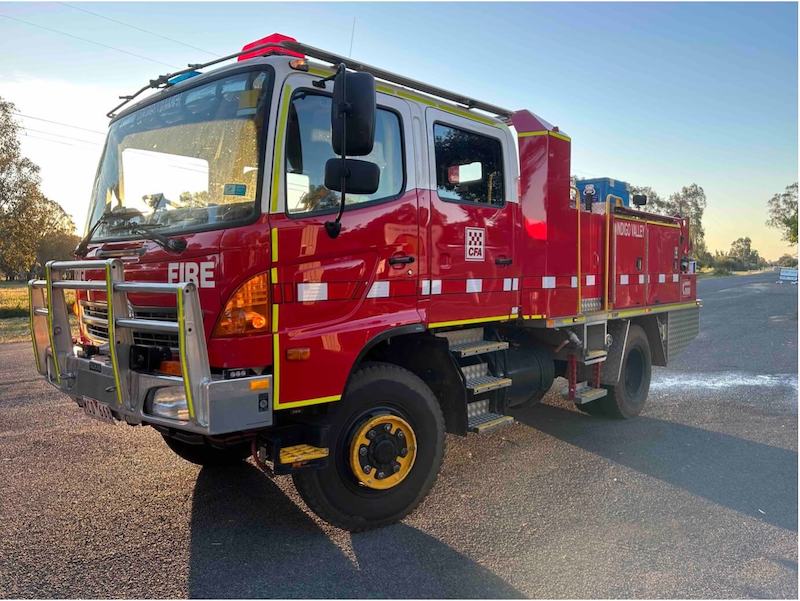With the recent spate of bushfires that have broken out over the spring in many parts of the country, it is a stark reminder that this is going to be a ‘bad’ summer.
The Department of Health and Aged Care has also updated its Emergency Health Management Page, now having a dedicated section on Bushfires and Floods.

As the seasons change and natural disasters become more prevalent, it's crucial for aged care providers to ensure their emergency planning is not only up to date but tested. When the proverbial hits the fan, you want to be confident staff and your clients or residents know what to do.
Here are some tasks to help you get ready before the worst hits us.
Emergency Preparedness for Home Care Service Providers:
1. Individual Client Support
- Review individual client emergency support plans to ensure up-to-date contact information and agreed actions are in place.
- For some clients, helping clean up their homes such as clearing gutters and removing hazardous debris, may be a service that can be supported as part of their assessed care needs.
2. Identify “at risk” clients and develop a response strategy for emergencies.
Do you know who in your client group is ‘vulnerable’ and what makes a person vulnerable? Ask yourself:
- Does the person live alone?
- Does the person have their own well-thought-out emergency plan?
- If a warning was issued, would the person receive the warning? If so, could they understand and act on it?
- Do they need assistance to move to a shelter, or somewhere safer if necessary?
3. Assistance with ‘Grab and Go' Bags
- Encourage clients in high-risk fire areas to prepare their “grab and go” bags for emergency evacuations.
- Provide assistance in creating personal fire/evacuation plans for at-risk clients.
- Offer regular monitoring for less mobile clients who may struggle to access necessities.
4. Adjust Service Delivery
- Modify service delivery times to avoid extreme heat during the day.
- Shift activities to cooler locations to ensure the safety and comfort of clients.
Emergency Preparedness for Residential Care Homes:
1. Verify and Update Contact Information
- Ensure emergency contact details, including Emergency Services numbers and contacts, are current.
- Update residents' “grab and go” bags with essential supplies, such as an up-to-date first aid kit, identification tags, and relevant resident documentation.
2. Maintain the Backup Generator
- Regularly service the backup generator and confirm it is in working order.
- Ensure an adequate fuel supply and educate staff on generator operation.
3. Grounds and Facility Maintenance
- Keep the facility's surroundings tidy by removing loose items and reducing potential fuel sources for fires.
- Clear gutters of debris to prevent blockages and reduce the risk of water damage.
4. Update and Review Evacuation Plans
- Contact local evacuation points, such as hospitals and alternative care organisations.
- Coordinate with external emergency service organisations to review protocols and procedures.
- Conduct regular training for staff in emergency procedures and evacuation drills.
5. Audit Emergency Supplies
- Perform an audit of emergency supplies to prepare for extended periods of isolation from regular suppliers.
- Review workforce plans and rosters to ensure adequate staffing levels during natural disasters.
Organisation wide tips
1. Check Contact Information
- Verify the Department's contact information is current and update it if necessary. This is essential for seeking assistance or reporting events.
2. Update the ‘Vulnerable Persons' Register
- Maintain a list of vulnerable consumers and understand their specific needs for emergency response.
3. Engage with Stakeholders
- Communicate with consumers and their carers/representatives regarding your emergency policies and procedures.
- Provide clear information about support and any changes in service due to extreme weather conditions.
4. Verify Emergency Equipment, Power, Water, Grounds, and Buildings
- Assess the need for assistance with home maintenance, including clearing gutters and setting up emergency kits.
- Ensure backup generators are operational, with an adequate fuel supply.
- Check emergency lighting, power points, and essential supplies.
5. Review Evacuation Plans
- Update evacuation plans and ensure they cover various scenarios.
- Establish agreements with nearby facilities or services for potential evacuations.
6. Training and Workforce Considerations
- Conduct regular fire and evacuation drills for staff.
- Ensure staff are familiar with the location of essential resources and the identity of fire wardens.
- Develop contingency plans for staff shortages and their impact on service delivery.
Emergency planning is a critical aspect of aged care service provision.
Especially as climate-related disasters become more frequent. By adhering to the guidelines and tips provided you can better prepare for emergencies and ensure the continuity of care. Remember that post-event planning is equally vital for a smooth recovery and a return to normal operations.
For additional resources and information, please visit the Department of Health and Aged Care's Emergency Health Management Page.
Some other helpful links include:
- ‘Heatwave Ready Resource‘ for residential aged care services (VIC Health)
- Fact sheets for Residential and Home Care – Caring for Older People in Warmer Weather
- Aged care state and territory emergency contacts
- Heatwave Service for Australia – real-time map and forecasts
If you can think of someone else who might benefit from this article, send them a link. We’d appreciate it! And if you’re looking for more helpful resources, why not check out our Total Quality Package resource hub?
- How to Disaster-Proof Your Aged Care Service Before Summer Hits - October 31, 2023
- The Best 6 Tips for Emergency Planning (excluding pandemics!) - November 4, 2021
- What's Your Message? | Communication in Aged Care - February 25, 2021



